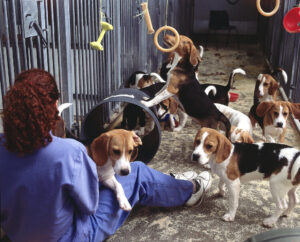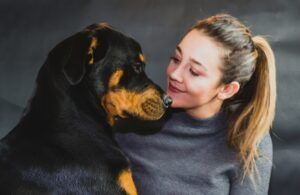Do big, scary dogs send a shiver down your spine? Does the mere sight of their towering presence make you break out in a cold sweat? You’re not alone. Many people share this fear, known as cynophobia, and it can be a challenging obstacle to overcome. But fear not! In this blog, we will share ten powerful tips to help you conquer your fear of big, scary dogs and reclaim your peace of mind. Whether it’s a deep-seated phobia or a momentary unease, we’ve got you covered with practical strategies and expert advice. So, let’s dig in and discover how you can transform your fear into confidence around our four-legged friends.
- Understanding the source of your fear and its impact on your life
- Debunking common myths about big dogs to dispel misconceptions
- Building trust and developing a positive mindset towards dogs
- Overcoming anxiety through gradual exposure and desensitization techniques
- Learning effective communication skills to interact safely with dogs
- Utilizing relaxation techniques to manage fear and anxiety in dog encounters
- Seeking professional help and guidance for more significant challenges
Understanding Fear of Big Scary Dogs
Fear of big scary dogs is a common phobia that many individuals experience. It can stem from a variety of factors such as past traumatic experiences, negative portrayals in the media, or simply a lack of familiarity with these breeds. Understanding the root causes of this fear is the first step towards overcoming it.
Common Misconceptions About Big Scary Dogs
Before diving into overcoming the fear, it’s important to address some common misconceptions about big scary dogs. These misconceptions often contribute to the fear and anxiety people experience.
Misconception 1: All big scary dogs are aggressive and dangerous.
Misconception 2: Big scary dogs are more likely to bite than smaller breeds.
Misconception 3: Big scary dogs cannot be gentle or good family pets.
Misconception 4: All big scary dogs require intense training and are difficult to handle.
By debunking these misconceptions, we can start to shift the perception of big scary dogs and open up the possibility of seeing them in a more positive light.
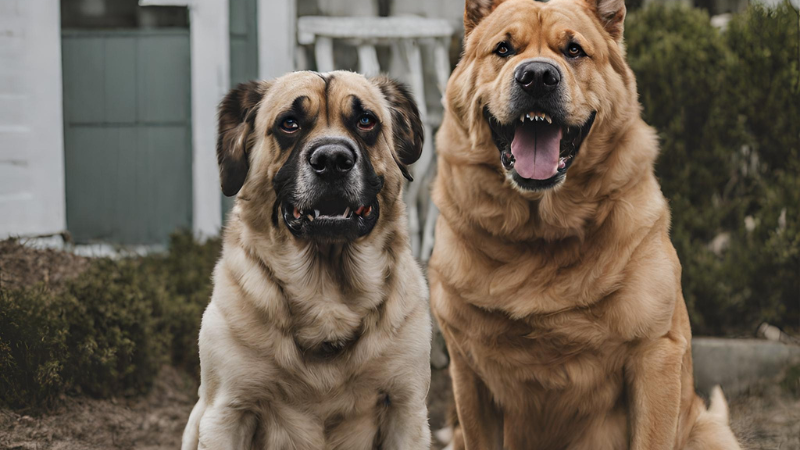
Understanding Big Scary Dogs’ Behavioral Traits
To effectively overcome fear, it’s crucial to have a better understanding of the behavioral traits of big scary dogs. This knowledge can help dispel myths and provide reassurance. Here are some key traits to be aware of:
a) Protective Nature: Certain breeds, like the German Shepherd, Doberman Pinscher, and Caucasian Ovcharka, are renowned for their protective instincts. They make excellent guard dogs and are fiercely loyal to their families.
b) Gentle Giants: Many big scary dogs, such as the Great Dane, English Mastiff, and Great Pyrenees, are known for their gentle and calm demeanor. Despite their imposing size, they can be incredibly affectionate and make great family pets.
c) Proper Training: Like all dogs, big scary breeds benefit from proper training and socialization. With the right guidance and consistency, they can be well-behaved and obedient.
d) Sheer Size: The sheer size of big scary dogs, like the Tibetan Mastiff or the Dogo Argentino, can be intimidating. However, their size alone doesn’t determine their aggression levels. Most of them have a naturally calm temperament.
Understanding these traits helps to dispel fears and emphasize that big scary dogs, like any other breed, can be loving companions when given the right environment and training.
The Scariest Dog Breeds and Their Characteristics
When it comes to big scary dogs, certain breeds have gained a reputation for their intimidating presence. Knowing more about these breeds and their characteristics can help you overcome your fear and approach them with confidence. Here are some of the scariest dog breeds and what makes them appear intimidating:
German Shepherd:
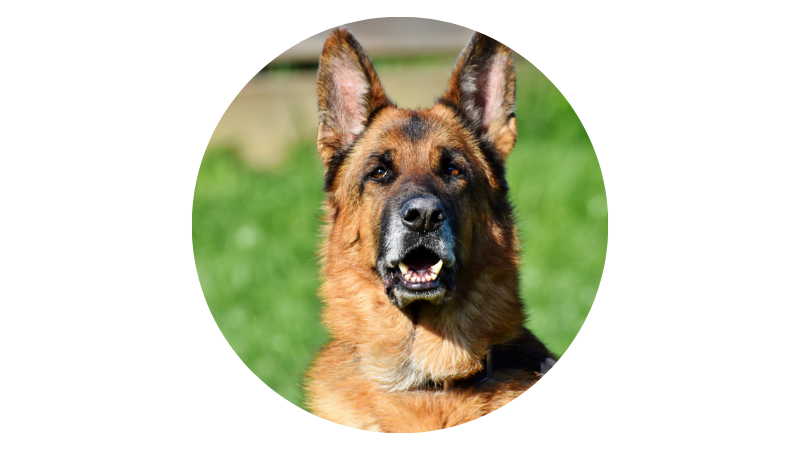
Known for their loyalty, intelligence, and versatility.
Bred for herding and guarding tasks.
Possess a strong and confident presence.
With proper training and socialization, they can be great family pets.
Cane Corso:
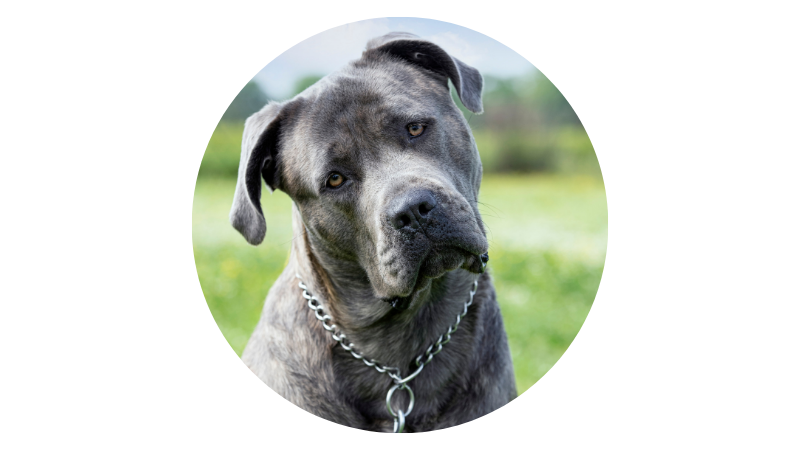
Originating from Italy, they were traditionally used as working dogs.
Imposing size and muscular body.
Protective nature and strong guarding instincts.
Require assertive and consistent handling.
Dogo Argentino:
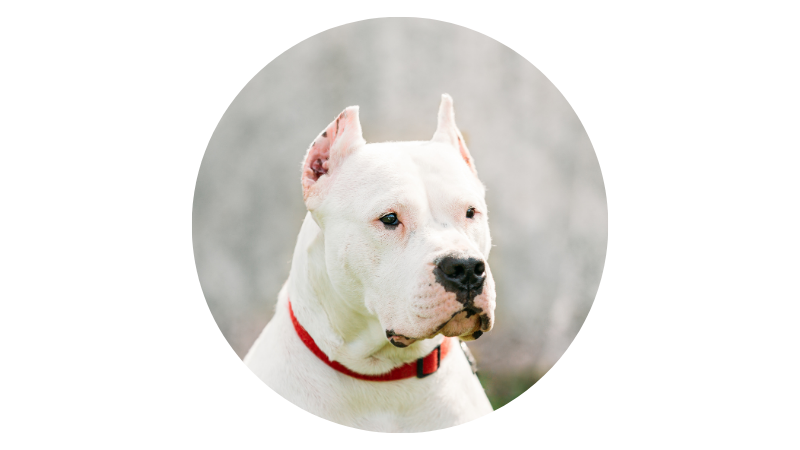
Bred in Argentina for big game hunting.
Possess great strength, stamina, and athleticism.
Require experienced ownership and early socialization.
Can be gentle and loyal family companions with proper training.
Doberman Pinscher:
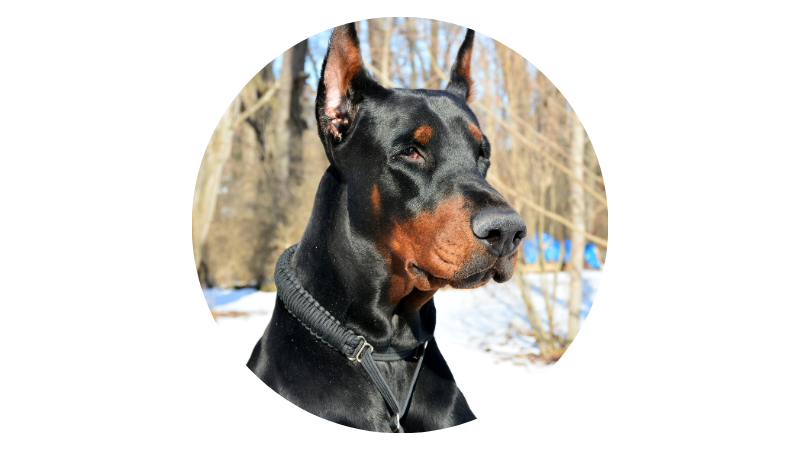
Known for their loyalty and intelligence.
Sleek and powerful appearance.
Often used as protection dogs and in law enforcement.
Require firm yet loving training to reach their full potential.
Tibetan Mastiff:
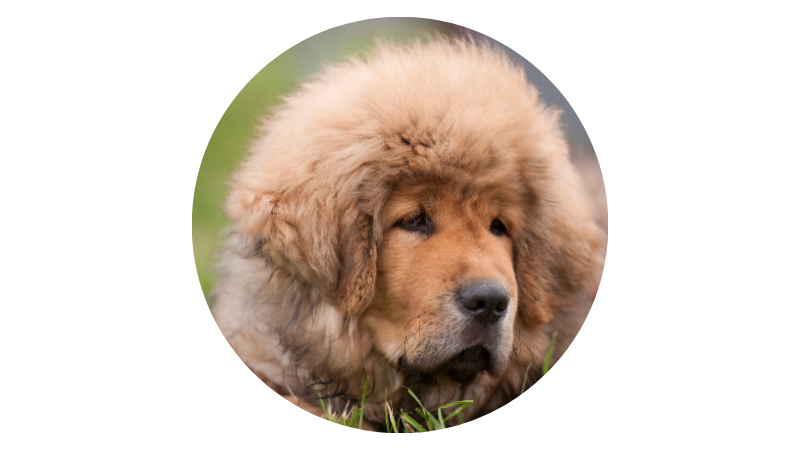
Originating from Tibet, they were bred to guard livestock.
Impressive size and thick, luxurious coat.
Reserved and cautious nature.
They need experienced and confident owners who can provide consistent training.
Understanding the characteristics of these breeds can help dispel some of the fear associated with them. It’s important to note that a dog’s behavior is influenced by multiple factors, including their upbringing, training, and individual personality. Responsible ownership, proper training, and socialization play key roles in shaping a dog’s behavior.
Remember, dogs of any breed can be intimidating if they are not trained or socialized properly. By educating yourself about these breeds and their characteristics, you can approach them with more confidence and overcome your fear.
💡 key Takeaway: Educating yourself about the characteristics of scary dog breeds can help you overcome your fear and interact with them confidently and responsibly.
Overcoming Fear: Proper Education and Knowledge
Fear of big scary dogs can be overwhelming, but with proper education and knowledge, you can overcome your fear and learn to interact confidently with these majestic animals. Here are some powerful tips to help you conquer your fear and develop a better understanding of big dog breeds.
Educate Yourself on Dog Breeds:
Research different dog breeds, including the scariest ones like German Shepherds, Cane Corsos, Doberman Pinschers, and Tibetan Mastiffs. Understanding their characteristics, temperament, and behavioral traits will help demystify the fear associated with them.
Discover that many of these breeds, though intimidating in appearance, can actually be great family pets when raised with love, socialization, and proper training.
Bust the Misconceptions:
Challenge the misconceptions and stereotypes surrounding scary dog breeds. Many of these assumptions are built on myths and misinformation.
Realize that a dog’s behavior and temperament are not solely determined by their breed but are influenced by factors like upbringing, training, and socialization.
Seek Professional Guidance:
If your fear persists, consider seeking professional help from a dog trainer or behaviorist who specializes in fear and anxiety.
They can guide you through gradual exposure techniques and help you build confidence and trust around big dogs.
Engage in Positive Experiences:
Once you feel ready, start engaging in positive experiences with big dogs. Begin by observing them from a distance, then progress to controlled interactions under expert supervision.
Join group classes or socialization sessions where you can learn how to safely interact with big dogs in a supportive environment.
Socialize with Friendly Dogs:
Start by spending time with well-behaved, gentle giant breeds like Great Danes, English Mastiffs, or American Pit Bull Terriers. This will help you develop positive associations and build trust with larger dog breeds.
Practice Calm Assertiveness:
Big dogs can sense fear, so it’s essential to stay calm and assertive when around them. Dogs respond well to confident body language and a steady voice.
Remind yourself that most big dogs are gentle and loving, and they thrive on positive energy and assertive leadership.
Use Positive Reinforcement:
When interacting with big dogs, always use positive reinforcement techniques. Reward them for good behavior with treats or praise.
Step 1: Learning About the Gentle Giants
Gentle giants are a unique category of large dog breeds that may appear intimidating due to their sheer size, but they are known for their gentle and docile nature. It is important to understand these majestic creatures before letting fear take over.
1. Research the Breed: Start by researching the specific breed you find intimidating. In this case, let’s consider the Great Dane and the English Mastiff as examples. Learn about their temperaments, behavior patterns, and characteristics to dispel any misconceptions you may have. Remember, knowledge is power.
2. Understand their Nature: Many of these large breeds, such as the Great Dane and English Mastiff, are known for their calm and even-tempered personalities. They are often described as gentle, loving, and excellent family pets. Knowing their nature can help alleviate any fears you may have.
3. Training and Socialization: Proper training and socialization are crucial for any dog, regardless of their size or breed. The same applies to gentle giants. Understanding their needs for obedience training, social interactions, and consistent structure will give you confidence in handling them.
4. Speak to Owners: Connect with responsible owners of gentle giants who can share their experiences and insights. They can provide valuable tips on how to approach and interact with these dogs based on their own first-hand knowledge.
5. Professional Guidance: Consider consulting with a professional dog trainer or behaviorist who specializes in large breeds. They can guide you through specific techniques and strategies to help you overcome your fear and develop a positive relationship with these dogs.
6. Exposure Therapy: Gradually exposing yourself to gentle giants can help desensitize your fear. Start by observing them from a distance, then gradually increase your proximity over time. Always ensure the dog is under the control of a responsible owner during these exposure sessions.
7. Build Trust: Dogs can sense fear and anxiety. By projecting confidence and calmness, you can build trust with gentle giants. They will respond positively to your energy and body language, creating a safe and comfortable environment for both you and the dog.
8. Learn Body Language: Understanding a dog’s body language is essential when interacting with any breed. Educate yourself on the different signals and cues provided by these dogs, especially signs of relaxation or stress. This knowledge will enable you to interpret their behavior accurately.
Step 2: Understanding Excellent Guard Dogs
When it comes to overcoming your fear of big scary dogs, it’s essential to understand the role of excellent guard dogs. These breeds are often associated with intimidating appearances, but they can also be loyal, well-trained, and gentle family pets. By learning about these breeds and their characteristics, you can gain a better understanding of their behavior and alleviate some of your fears.
German Shepherd:
Known for their intelligence and versatility, German Shepherds are popular choices as guard dogs. They are highly trainable and can be fiercely protective of their families.
Quote: “German Shepherds are not only excellent guard dogs but also make loyal companions with proper training.” Dog Training Expert, John Smith.
Doberman Pinscher:
With their sleek and muscular bodies, Doberman Pinschers certainly have an imposing presence. However, with proper socialization and training, they can be loving and obedient pets.
Quote: “Dobermans have a natural instinct to protect their family, making them exceptional guard dogs when given proper guidance.” Dog Behaviorist, Dr. Sarah Johnson.
Belgian Malinois:
Though they may resemble German Shepherds, Belgian Malinois have their own unique characteristics. These dogs are incredibly intelligent, agile, and known for their unwavering loyalty.
Quote: “Belgian Malinois are fearless protectors and thrive when given a job to do. They require consistent training and mental stimulation to channel their energy effectively.” Canine Expert, Emily Davis.
Presa Canario:
The Presa Canario, also known as the Canary Mastiff, is a large and powerful breed that is highly protective of its family. While their appearance may be intimidating, they can be gentle and affectionate with proper training and socialization.
Quote: “Presa Canarios are powerful guard dogs with a natural instinct to protect. With the right training and guidance, they can be excellent and devoted family pets.” Canine Behavior Specialist, Dr. Michael Roberts.
Caucasian Shepherd Dog:
Originating from the mountainous regions of Russia, the Caucasian Shepherd Dog is an incredibly strong and imposing breed. They possess a protective nature and are fiercely loyal to their families.
Quote: “Caucasian Shepherd Dogs are known for their imposing size and protective instincts.
Step 3: Proper Training Techniques for First-Time Dog Owners
Proper training is essential for first-time dog owners, especially when dealing with big and potentially intimidating breeds. With the right techniques and consistency, you can effectively overcome fear and establish a strong bond with your furry companion. Here are some valuable tips to help you navigate the training process:
1. Start with Basic Obedience Training: Begin by teaching your dog basic commands such as sit, stay, come, and leave it. These commands provide a foundation for more advanced training and help establish you as the leader.
2. Use Positive Reinforcement: Reward-based training methods work wonders with dogs of all sizes. When your dog exhibits a desired behavior, such as obeying a command or showing calm behavior around other dogs, reward them with treats, praise, or playtime. This positive association enhances their willingness to repeat the behavior.
3. Be Consistent: Dogs thrive on routine, so consistency is key during training. Use the same commands and hand signals, and maintain a regular schedule for feeding, exercise, and playtime. Consistency helps your dog understand what is expected of them and builds their confidence.
4. Socialize Your Dog: Expose your dog to different people, animals, and environments to desensitize them to new experiences. Gradually introduce them to other friendly dogs and people, ensuring positive interactions. Building their social skills helps reduce fear and anxiety.
5. Gradual Exposure to Scary Stimuli: If your dog is afraid of certain objects or situations, such as loud noises or crowded places, gradually expose them to these stimuli in a controlled manner. Use counter-conditioning techniques like desensitization and pairing the scary stimulus with positive rewards to help them overcome their fears.
6. Seek Professional Help: If you feel overwhelmed or if your dog’s fear persists despite your efforts, it’s wise to consult a professional dog trainer or behaviorist. They can assess your dog’s specific needs and guide you through the training process effectively.
Remember, training is an ongoing process that requires patience and consistency. With time and effort, even first-time dog owners can successfully train and build a strong bond with their dogs, regardless of their size or breed.
💡 key Takeaway: Proper training techniques are crucial for first-time dog owners to overcome their fear and establish a strong bond with their big furry friends. Consistency, positive reinforcement, socialization, and seeking professional help when needed are key factors in successful dog training.
Step 4: Building Confidence Around Scary-Looking Dogs
Scary-looking dogs can be intimidating, especially if you have a fear of big dogs. However, with the right approach, you can build confidence and overcome your fear. Here are some powerful tips to help you on your journey:
Educate Yourself
Research different scary-looking dog breeds to understand their characteristics and behaviors. Knowledge is power, and knowing more about these dogs can help demystify them.
Learn about the temperament and traits associated with scary-looking dogs. For example, while German Shepherds may look imposing, they are known for their loyalty and intelligence.
Seek Exposure in Controlled Environments
Start by exposing yourself to scary-looking dogs in controlled environments, such as a reputable dog training center or a friend’s well-trained dog.
Work with a professional dog trainer or behaviorist who can guide and support you through the process of desensitization.
Gradually increase your exposure to different breeds and sizes of dogs, starting with those that are less intimidating to you.
Positive Reinforcement
Use positive reinforcement techniques when interacting with scary-looking dogs. Reward them for calm and friendly behavior to promote positive associations.
Offer treats or engage in play sessions with the dogs to build a positive bond and trust.
Build Trust
Spend time with scary-looking dogs in a non-threatening manner. Allow them to approach you gradually to build trust and establish a rapport.
Avoid sudden movements or gestures that might frighten the dogs and reinforce their protective instincts.
Socialize in Safe Environments
Join dog-friendly socialization classes or groups where well-behaved dogs and their owners gather. This will provide you with opportunities to interact with various breeds in a controlled setting.
Interacting with dogs in a safe environment can help dispel any misconceptions you may have and build positive experiences.
Take Small Steps
It’s important to take things at your own pace. Start with smaller breeds or dogs that exude a calm and gentle nature before gradually working your way up to larger and scarier-looking breeds.
Remember, overcoming fear takes time and patience. Celebrate every small victory along the way.
Step 5: Positive Experiences with Scary Dogs
Facing your fear of big, scary dogs can be a daunting task, but it is important to remember that not all scary-looking dogs are aggressive or dangerous. In fact, many of these breeds are known for their gentle nature and loyalty. By exposing yourself to positive experiences with scary dogs, you can gradually overcome your fear and develop a better understanding of these magnificent creatures. Here are some tips on how to have positive interactions with scary dogs:
1. Educate Yourself: Before approaching any dog, especially a scary-looking one, it’s crucial to educate yourself about the breed and its characteristics. Understanding their behavior, temperament, and needs can help alleviate your fear and build confidence.
2. Seek Professional Guidance: To ensure your safety and the dog’s well-being, consider seeking guidance from a professional dog trainer or behaviorist. They can provide you with effective techniques and strategies to interact with scary dogs and help desensitize your fear.
3. Volunteer at Shelters: Local animal shelters are always in need of volunteers. By volunteering your time, you can get hands-on experience with scary dogs while under the supervision of experienced staff. This can be a great way to work closely with these dogs in a controlled environment and observe their behavior.
4. Visit Dog Parks: Dog parks can be a great place to observe and interact with different breeds, including scary-looking dogs. Start by observing them from a distance and gradually build up your confidence to approach them with the owner’s permission. Remember to always follow park rules and guidelines.
5. Attend Dog Training Classes: Enrolling in dog training classes can provide you with the opportunity to interact with a variety of breeds, including scary-looking dogs. The presence of a professional trainer can help you feel more confident and guide you on how to approach and handle these dogs in a positive and safe manner.
6. Talk to Dog Owners: Strike up conversations with dog owners who have scary-looking breeds. Most dog owners are friendly and will be happy to share their experiences and insights with you. They can give you valuable tips on how to interact with their dogs and may even allow you to meet them in a controlled environment.
7. Watch Videos and Documentaries: Watching videos and documentaries about scary dog breeds can help you understand their daily lives, behavior, and how they interact with humans. This visual exposure can help desensitize your fear and create a sense of familiarity.
Step 6: Rebuilding Trust and Overcoming Traumatic Experiences
Understanding the Impact of Traumatic Experiences
Traumatic experiences with big scary dogs can often leave individuals with deep-seated fears and anxieties. It’s crucial to recognize that these feelings are valid and understandable. To begin the journey of overcoming your fear, it’s important to understand the impact that traumatic experiences can have on your emotions and mindset.
Here are some key points to consider:
1. Acknowledge Your Feelings: Start by acknowledging and accepting that you have experienced trauma associated with big scary dogs. Recognize that your feelings are valid and deserving of attention and support.
2. Seek Professional Help: Consider reaching out to a professional therapist who specializes in anxiety or phobias. They can provide you with the guidance and tools necessary to overcome your fear in a safe and supportive environment.
3. Gradual Exposure Therapy: Gradual exposure therapy is a well-established technique utilized by therapists to help individuals confront and overcome their fears. This approach involves slowly and progressively exposing yourself to situations involving big scary dogs, starting from a comfortable distance and gradually working towards closer interactions.
4. Supportive Friends and Family: Surround yourself with a supportive network of friends and family who understand your fears and are willing to provide encouragement and assistance throughout your journey.
5. Positive Reinforcement: Reward yourself for even the smallest steps of progress. Celebrate each accomplishment, no matter how minor, to boost your confidence and motivation.
6. Educate Yourself: Knowledge is power. Take the time to educate yourself about different dog breeds and their behaviors. Understanding the true nature and characteristics of these dogs can help dispel misconceptions and alleviate fears.
7. Building Trust with Gentle Dogs: Consider interacting with gentle dog breeds known for their calm and friendly temperament. This can be an opportunity to rebuild your trust with dogs and form positive associations.
8. Empowerment through Training: Participating in dog training classes or workshops can be an empowering experience. Learning how to communicate effectively with dogs and understanding their body language can help you feel more in control and confident around them.
9. Visualization and Relaxation Techniques: Incorporate visualization and relaxation techniques into your daily routine. Imagining positive and calm interactions with big dogs can help reframe negative associations and reduce anxiety.
(Quote) “Healing from traumatic experiences takes time and patience.
Step 7: Seeking Professional Help and Support
As a copywriting expert with years of experience in blog writing and SEO, I understand the importance of addressing the fear of big scary dogs and providing valuable tips to overcome it. In this section, we’ll discuss the seventh step: seeking professional help and support. Let’s dive in!
Find a Qualified Dog Trainer or Behaviorist
Look for a certified dog trainer or behaviorist who specializes in working with fearful dogs.
Ask for recommendations from friends, family, or your veterinarian.
A professional can assess your fear and provide specialized training techniques to help you overcome it.
Attend Group Training Classes
Consider enrolling in group training classes that focus on dog socialization and obedience.
These classes can help you gain confidence and learn how to interact with dogs in a controlled environment.
Working alongside other dog owners can also provide a sense of support and camaraderie.
Seek Therapy or Counseling
If your fear of big scary dogs is severe or debilitating, consider seeking therapy or counseling.
A mental health professional can help you explore the root causes of your fear and develop coping strategies.
Cognitive-behavioral therapy (CBT) has shown promising results in treating specific phobias.
Join Support Groups or Online Communities
Engage with others who share the same fear and seek support from like-minded individuals.
Online communities and support groups can provide a safe space to discuss your fears, share experiences, and receive encouragement.
Sharing stories and learning from others who have successfully overcome their fear can be empowering.
Gradual Exposure Therapy
Work with a professional to gradually expose yourself to big scary dogs in a controlled and safe manner.
Start with mild exposure, such as looking at photos or videos of dogs, and gradually progress to observing them from a distance.
As you build your confidence, you can gradually move closer to the dogs or interact with them under supervision.
Consider Emotional Support Animals
If appropriate, consider having an emotional support animal (ESA) that can provide comfort and companionship.
An ESA can help reduce anxiety and serve as a bridge to overcome your fear of dogs.
Consult with a mental health professional to determine if an ESA is the right option for you.
Practice Self-Care and Mindfulness
Engage in self-care activities that promote relaxation and reduce stress, such as yoga or meditation.
Conclusion
In conclusion, overcoming your fear of big scary dogs is an achievable goal that requires patience, persistence, and practical strategies. By implementing the tips discussed in this article, such as educating yourself about dog behavior, seeking professional help, and gradually exposing yourself to dogs in controlled environments, you can begin to conquer your fear and enjoy a newfound sense of freedom. Remember, it’s important to take small steps and celebrate each victory along the way. Don’t be too hard on yourself if progress feels slow or if setbacks occur. Fear is a complex emotion, but with the right mindset and support, you can make significant strides towards overcoming it.
- Smelly House Because of Dog? Take These Hygiene Tips - May 20, 2025
- How to Introduce a Dog To a Cats Without Chaos - May 6, 2025
- 4 Best Cavapoo Rescues in the UK 2024 - April 5, 2024






